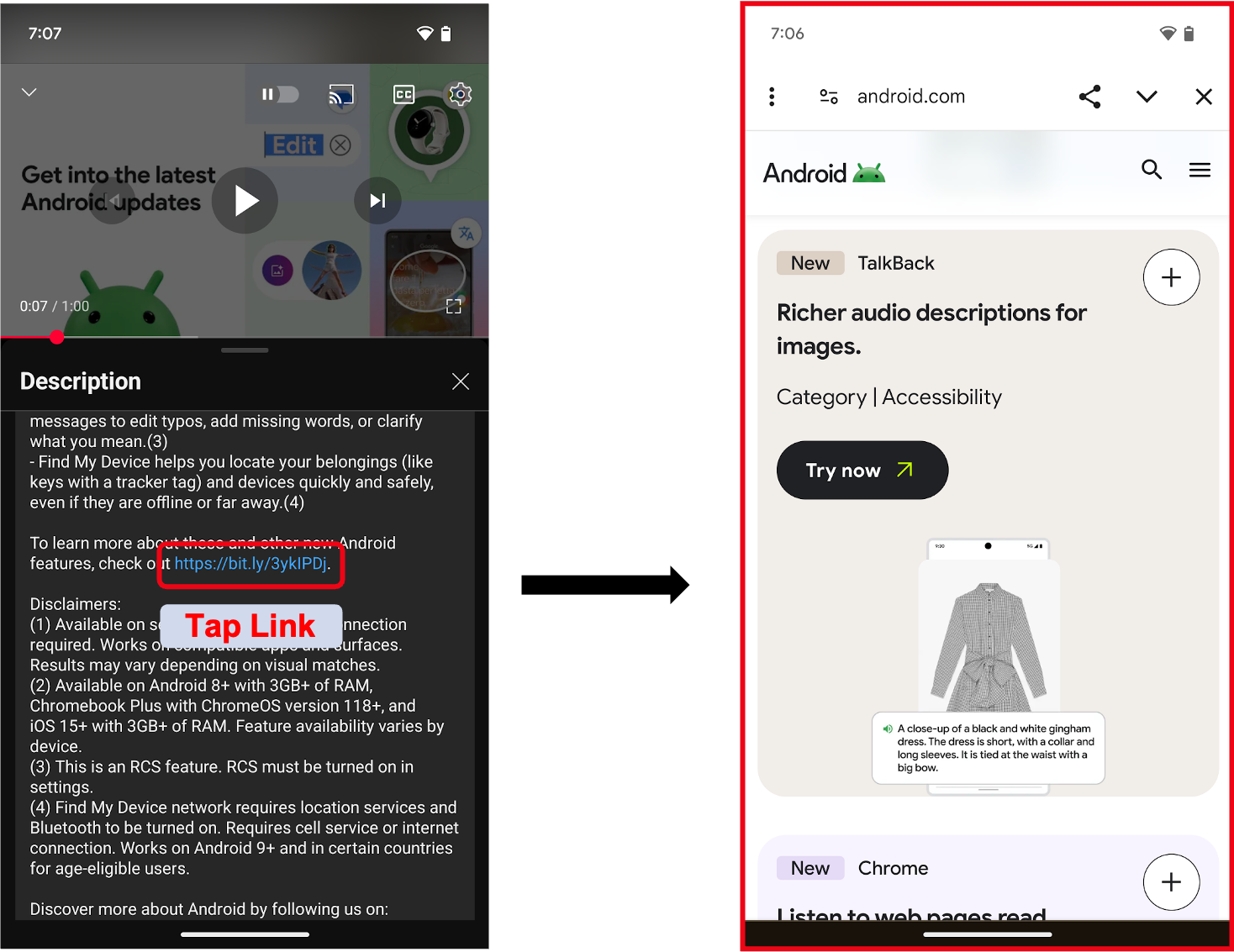In-app browsers can provide a full browser experience for your users, while letting them stay in the context of your app. This is most commonly used when you have a link or ad in your app which links to a web page. The web page can be opened in an in-app browser, as seen in Figure 1.

Both Custom Tabs and WebView are APIs available to power your in-app experience, but choosing which one is best for you depends on your use case. The following table shows some advantages of each:
Out-of-the-box ready browsing for 3rd party content handled by the user's default browser. Most common for the majority of use cases. |
Custom developer controlled browsing experiences. Typically used for more advanced use cases. |
||||
|
|
Although Custom Tabs are supported by a vast majority of browsers, some offer additional customization options. To learn more, see this Custom Tabs browser support comparison.
Additional resources
To develop web pages for Android-powered devices using WebViews or Custom Tabs APIs, see the following documents:
- Embedding web content into your app as primary or supporting content
- Custom Tabs Overview
- Overview of Trusted Web Activities
- Browser support
